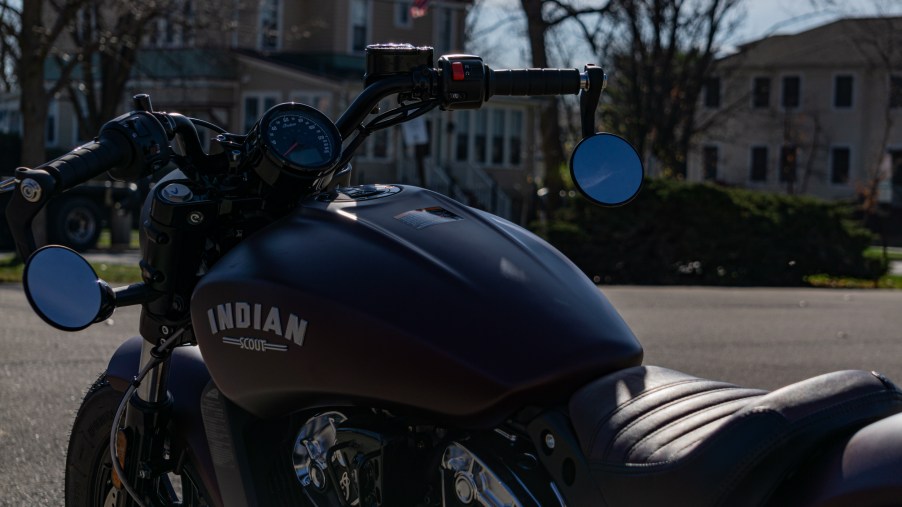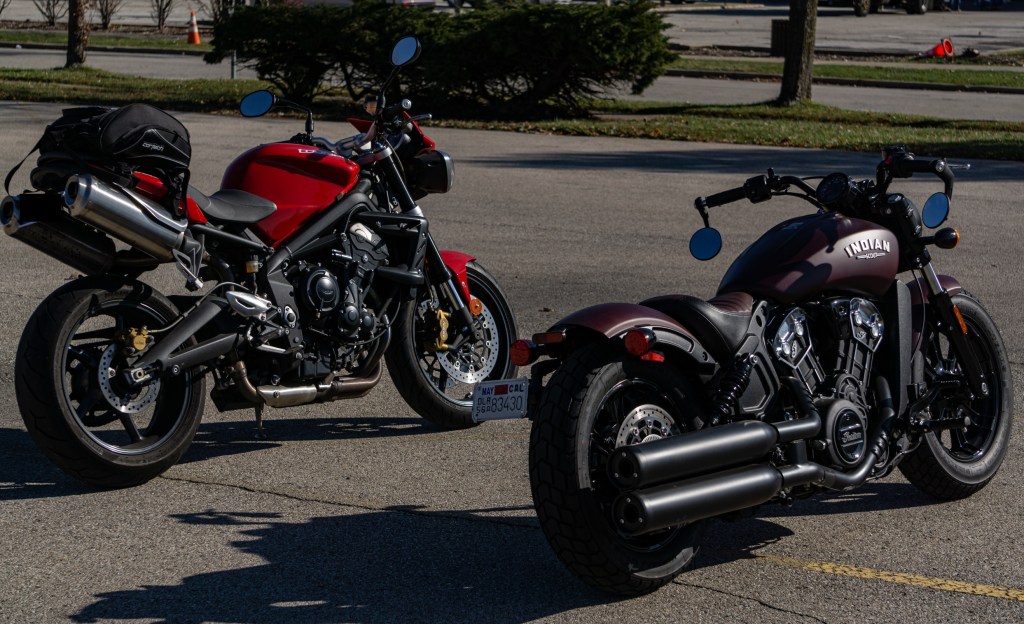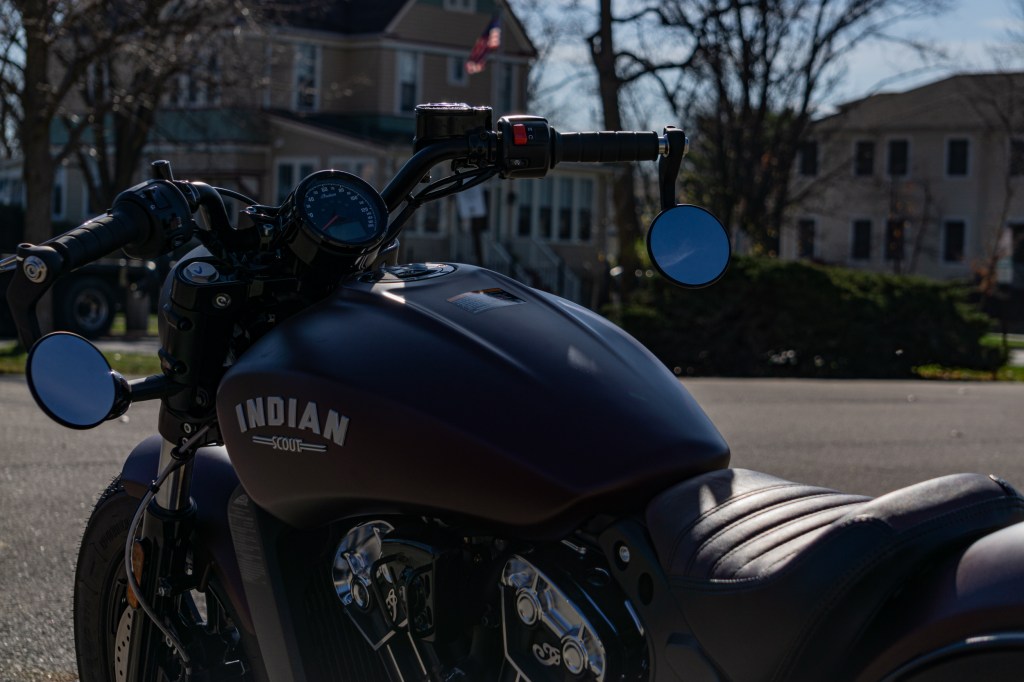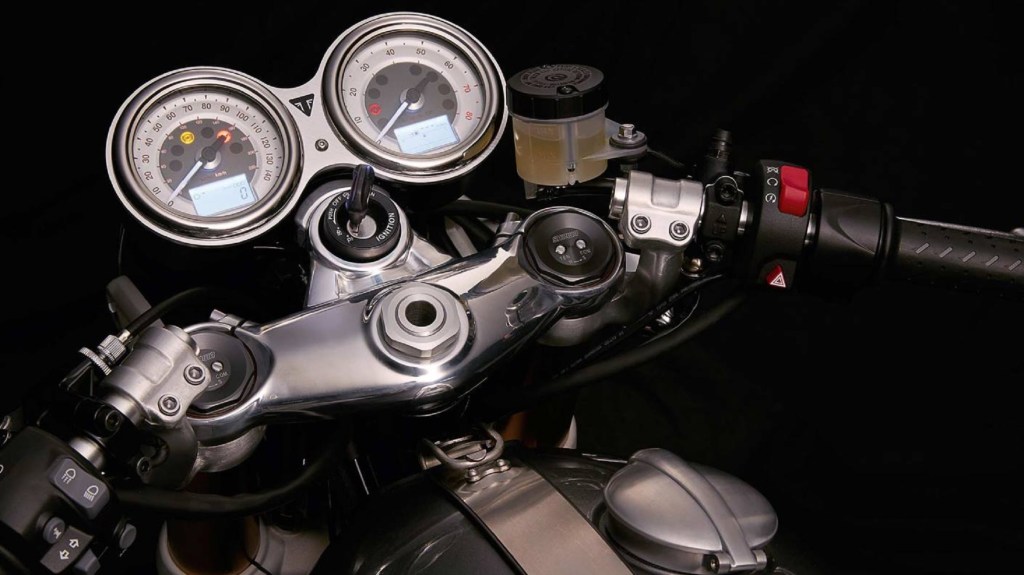
Is Changing Your Motorcycle Handlebars Worth It?
Maintenance isn’t the only thing you can do to your motorcycle outside of riding it. Like car owners, many riders customize and modify their bikes to suit their needs. Someone going off-roading, for example, will likely fit skid plates and crash bars. Those interested in touring will start looking into luggage racks. And so on. However, regardless of the specific end goal, one fairly-common modification is fitting a different motorcycle handlebar. But is it worth considering for your bike?
Motorcycle handlebars come in many shapes and styles

In its simplest form, a motorcycle handlebar is a curved piece of tubing. And it’s a formula many kinds of bikes follow. For example, the Indian Scout Bobber and my Triumph Street Triple R both have curved single-piece handlebars. But if you look at the two side-by-side, they clearly have different proportions.
Those proportions fall into three main categories, NADAGuides explains. There’s ‘rise,’ the difference in height between the bar’s lowest and highest points measured straight up, GetLowered explains. ‘Pullback’ is the distance from the mounting point to the grips measured straight back. And finally, there’s the width, which is self-explanatory.

Changing these measurements around means you can wind up with a very different motorcycle handlebar. My Street Triple’s handlebar, for example, falls into the “stock” category. The Bobber, meanwhile, with their greater rise height and curved grips, more-closely resemble what BikeBandit calls ‘mini-ape’ bars. The name is derived from how riders hang from the bars while riding, GetLowered explains.
Further-exaggerating rise creates a shape like the Z-bar, which has a 90° bend. Beach bars, on the other hand, have minimal rise but maximum pullback. And drag bars bring both rise and pullback to a minimum.

But there’s one kind of motorcycle handlebar that breaks from this formula: the clip-on bar. Clip-on bars are typically only seen on sportbikes and café racers and come in two pieces rather than one. Their name comes from the fact that they literally clip onto a motorcycle’s front forks, Motosport explains.
But despite their different shape, clip-on bars serve the same purpose as any other motorcycle handlebar. Namely, putting the rider in a specific position. In the case of clip-on bars, it puts the rider in a tucked-in, aerodynamic, and aggressive riding position that facilitates agile handling. They’re also lighter and offer greater adjustability, though they’re not as comfortable over longer distances.
Why would you change your motorcycle’s handlebar?
One of the most important things to consider before buying a motorcycle is how comfortable you are on it. That’s because, unlike most cars, bikes aren’t necessarily universal-fit.
A key criterium for riding comfort is the so-called “rider triangle,” Cycle World explains. It describes the relationship between the seat height, the footpeg position, and how your hands rest on the motorcycle’s handlebar. And the position of your motorcycle’s handlebar doesn’t just affect your overall riding comfort, Cruiser explains.
Improperly-positioned bars can put pressure on your nerves and cause numbness or tingling. They can also put stress on your arm bones and strain your shoulder and neck muscles. And over time, that can lead to lower back pain and additional issues.
Motorcycle handlebars, naturally, are also what let you control the bike, MCN explains. And based on how they’re positioned and their overall dimensions, that changes the effort needed to initiate turns. Improperly-fitted or improperly-sized bars can also limit your bike’s allowable steering angle.
Changing your motorcycle handlebar isn’t always just for visual effect, then, NADAGuides explains. It’s often for comfort- and dynamics-related purposes, too.
Can and should you do this yourself?
The good news is that if you’re thinking about changing out your motorcycle’s handlebar for comfort reasons, that may not be necessary.
Your handlebar can rotate to a certain extent, which may be all that’s necessary, Cruiser reports. And if that’s not enough, installing different risers is also a simple, easy-to-DIY solution, Motorcyclist reports. However, make sure to readjust your other hand controls, levers, cables, and mirrors once you’ve done so, Cruiser and Cycle World report. The levers should be positioned such that there’s a straight line between your elbows and wrists.
But if you do need to install a completely different motorcycle handlebar, that’s still doable for the average home mechanic, Motorcyclist reports. First, start by measuring where your hands naturally fall. From there, determine what kind of handlebar matches those measurements. Keep in mind, though, that the new bar has to clear your gas tank with the fork turned to full-stop in either direction, Revzilla reports.
Once you have your new bar, it’s simply a matter of removing the existing hardware and re-installing it. Though keep in mind, you may have to drill new holes for the various switches.
Follow more updates from MotorBiscuit on our Facebook page.


